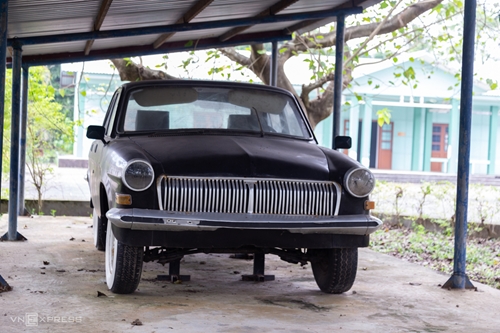December 16, 2022 | 19:50 (GMT+7)
A visit to Cam Lo district – a historical place
PANO – Cam Lo district was once chosen by King Ham Nghi to issue the imperial proclamation Can Vuong (Helping the King), and was the seat of the Provisional Revolutionary Government.
During the national history, Cam Lo district was selected twice to set up the "resistance capital," including once when King Ham Nghi issued the Can Vuong proclamation calling for a resistance against the French invaders to save the country, and once when the headquarters of the Provisional Revolutionary Government of the Republic of South Vietnam was established.
    |
 |
|
A temple dedicated to King Ham Nghi and Can Vuong soldiers was inaugurated at Tan So National Monument in Cam Chinh commune, Cam Lo district on July 13, 2020. |
    |
 |
|
The temple consists of five compartments and two wings, simulating the architectural style of the Nguyen Dynasty. |
In 1883, the Nguyen Dynasty built Tan So Citadel in Cam Lo as a backup capital. On July 13, 1885, in Tan So Citadel, King Ham Nghi issued the Can Vuong proclamation calling on people nationwide to rise up against the French colonialists to wrest back national independence.
Tan So Citadel has witnessed the nation's heroic days with the rise of the Vietnamese feudal class in leading the national movements against the foreign invaders. The area is a vacant lot now. In 1995, Tan So Citadel was recognized as a national monument.
    |
 |
|
In the photo are cannonballs (stone-made ammunition, loaded into a bronze-made cannon) in Tan So Citadel. |
    |
 |
|
Brick, tile, mortar, and cannonballs excavated in Tan So citadel in May 2012 |
    |
 |
|
In July 2020, on the occasion of the 135th anniversary of King Ham Nghi’s delivery of the Can Vuong proclamation, the authorities of Cam Lo district moved the altar of King Ham Nghi and Can Vuong soldiers from Hue Citadel to Tan So Citadel for worship. At the moment, the temple is open to locals, students, and tourists. |
    |
 |
|
The complex was a place where foreign ambassadors presented their credentials. It also welcomed leaders of many countries, including Cuban leader Fidel Castro in September 1973. |
    |
 |
|
A gift from the city of Bologna (Italy) to the Provisional Revolutionary Government of the Republic of South Vietnam. In 1985, the buildings in the area completely collapsed in a storm. |
    |
 |
|
An official state vehicle at the headquarters of the Provisional Revolutionary Government of the Republic of South Vietnam. This is the only remaining original artifact of the relic site. |
Each year, this monument welcomes about 3,000 visitors. This area currently has very few artifacts and pictures.
Source: VnExpress
Translated by Trung Thanh